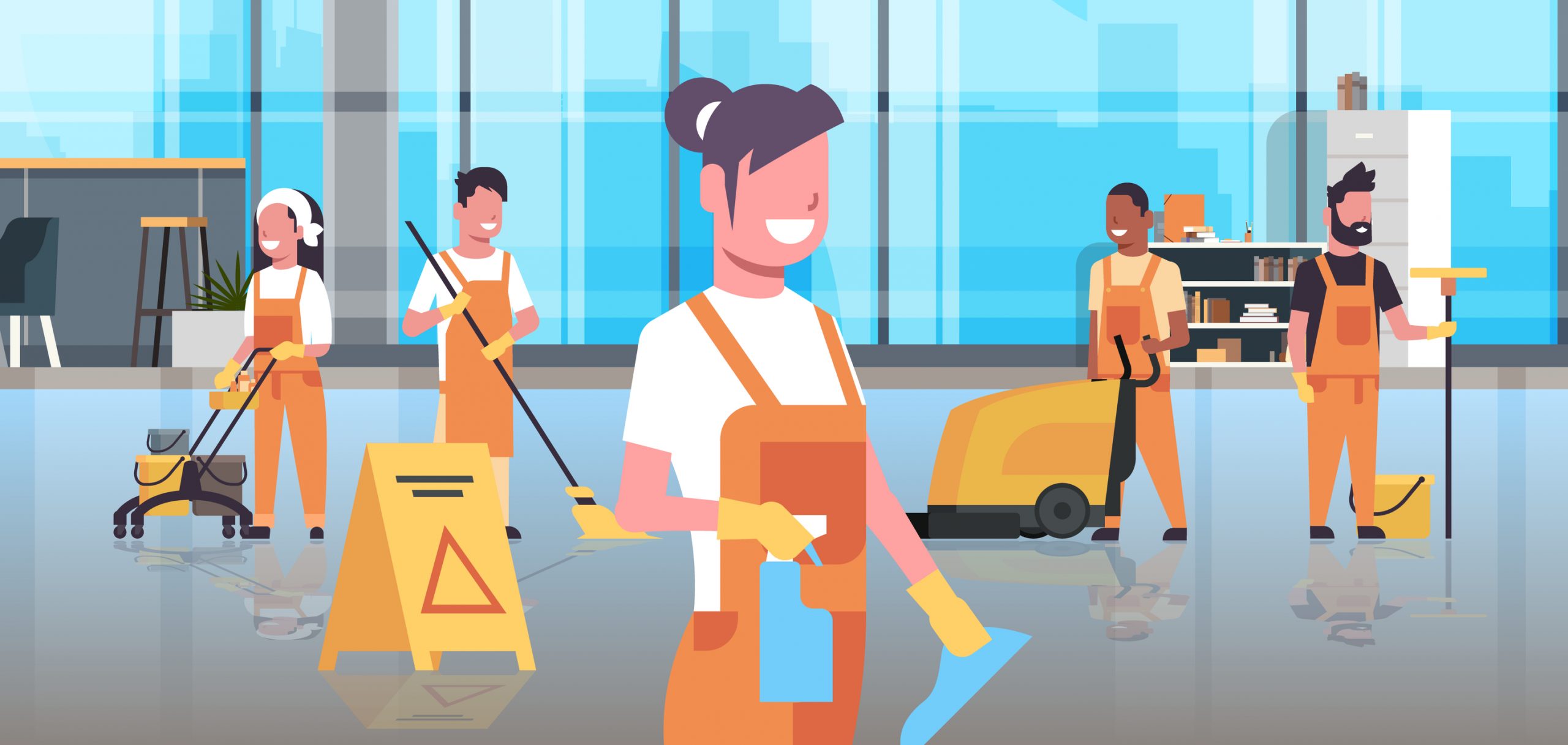They say “practice makes perfect,” and in the cleaning industry, it is absolutely true. Quality training is essential to ensure both employee safety and consistent cleaning results. Without training, cleaning can be a dangerous job. With such a wide variety of chemicals, tools and equipment available within the industry, it’s extremely important that cleaning staff understand how to use them correctly to protect both themselves and building occupants who expect the highest levels of cleanliness.
Training to Clean for Health and Appearance
A comprehensive training program ensures that cleaning professionals are taught the proper techniques to prioritize cleaning for health, safety and appearance. Un-trained cleaning staff can do more harm than good by spreading germs around a facility, which puts both occupants and themselves at risk. Improper cleaning can also negatively impact the indoor air quality (IAQ) in a facility which affects all building occupants as well. Ongoing training is the basis to ensure that cleaning professionals are armed with the experience and knowledge to provide reliable, consistent and safe cleaning results.
Consider the following best practices to adequately train and develop both new and tenured cleaning professionals on your team:
Set cleaning expectations.
Be sure to provide a detailed list of cleaning expectations and specifically outline tasks and responsibilities. Reinforce all onboarding training with refresher courses. This will ensure even the most seasoned employees stay engaged and informed regarding any new cleaning procedures and protocols. In addition, consistently review personal protective equipment (PPE) requirements to make sure all employees know what is specifically required to protect themselves while on the job.
Offer in-depth chemical safety and tool training.
Prior to using any chemical, tool or piece of equipment, it is vital to provide staff with a thorough training. The training should include what it is, why it is used and how to use it correctly. Doing so will help reduce the risk of injuries and infections, as well as ensure cleaners are following safety laws. Using a color-coded system to match tools, chemicals and labels helps simplify the process, especially for multi-lingual employees. This will make it easier for cleaners to perform their jobs and prevent cross contamination.
Provide hands-on training.
There are numerous ways to train employees including videos, demonstrations and literature, but always be sure to include an adequate amount of time for hands-on training. This type of training enables cleaners to try out tasks for themselves, learn from mistakes and receive feedback prior to working in the field. This will provide them with experience and confidence needed to meet and exceed cleaning expectations. Following training, shadow both new and tenured employees occasionally to ensure they are correctly following protocol and provide immediate constructive feedback.
Empower employees.
Training sessions are a great time to boost employee morale and ensure that employees feel valued and essential. Promote a positive environment where questions are always welcomed and encouraged. This will help attendees continue to learn, grow and retain information. Including a little fun in your training sessions with an ice breaker game, a contest or a nice meal will also set a positive tone. Empowering employees and making sure every voice is heard can significantly boost morale and reduce employee turnover that can lead to lapses in consistent cleanliness.
Review the training process frequently and ask for employee feedback.
Review your training process at least annually to ensure that you continue to meet the needs of both your employees and building occupants. Cleaning technology, chemicals and tools are constantly evolving and training techniques need to be updated to coincide with any changes. In addition, ask for employee feedback after a training session through a questionnaire or anonymous form. This will provide the best insight on how to improve your approach to training and how to cater to the training styles that employees prefer.
A Commitment to Cleanliness
Cleaning has been propelled into the spotlight for its role in infection control during the pandemic, but training has always been the foundation of consistent, reliable cleanliness. Now is a great time to review and refresh your training program to ensure it is up to date to continue providing employees with a safe, enjoyable work environment and delivering cleanliness for building occupants every day.
At GSF USA, we care about clean and the people who deliver it. Training and development help our employees achieve the highest levels of professionalism so they can uphold cleanliness for our customers. Contact us to learn more, and follow us on LinkedIn and Facebook for the latest updates.

